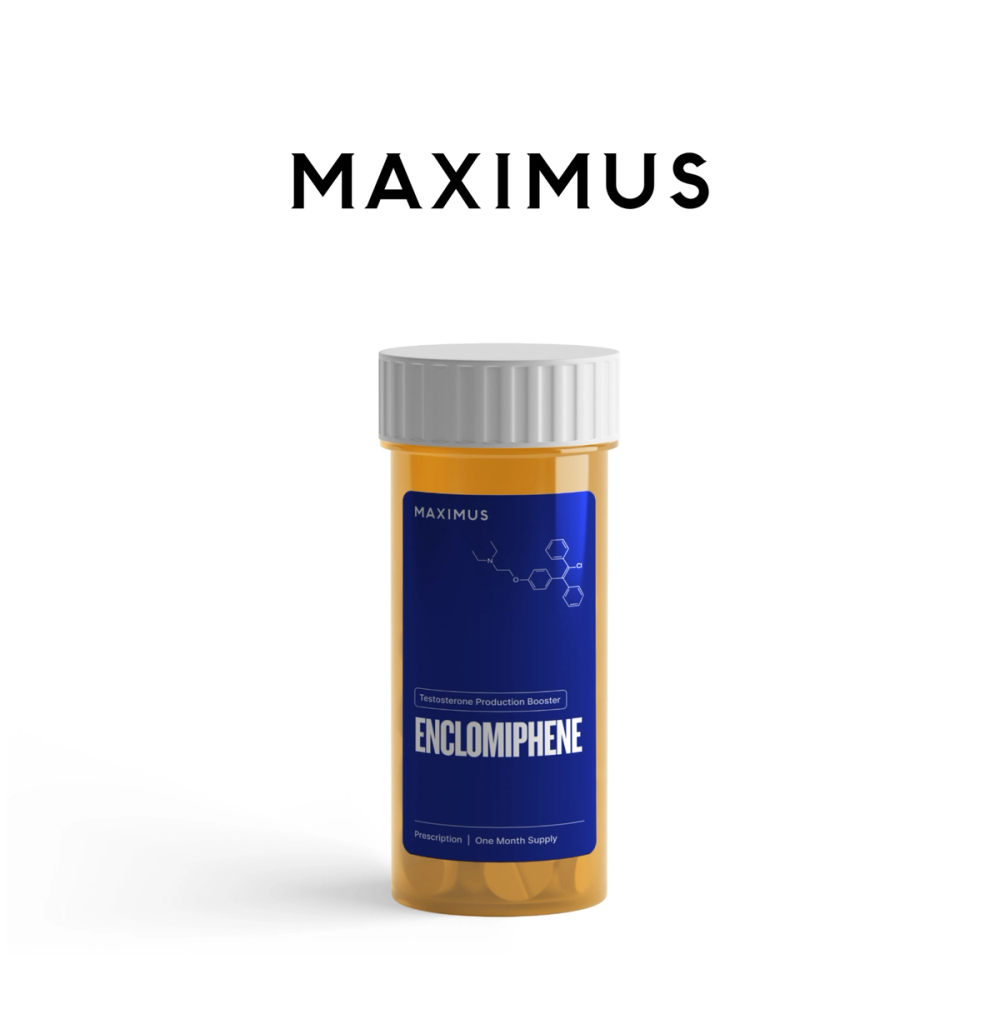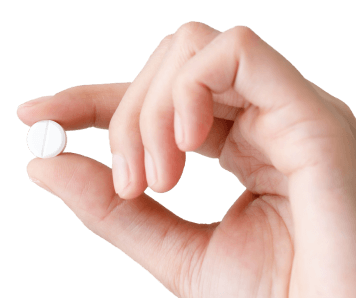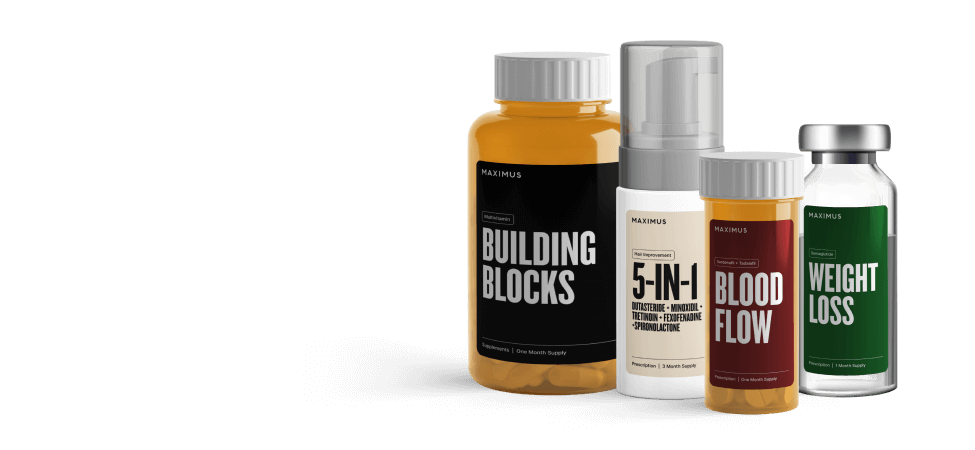Hypogonadism, also known as testosterone deficiency syndrome, affects up to approximately 12.8% of adult men in the general population, and its prevalence is expected to increase to 6.5 million by 2025 as the population ages. There are two types of male hypogonadism:
- Primary hypogonadism, which signals a problem with the testicles.
- Secondary hypogonadism, which is related to a problem in the hypothalamus or the pituitary gland. These are the parts of the brain that tell the testicles to produce testosterone.
Read on to learn about the symptoms and causes of secondary hypogonadism, how to test for testosterone deficiency, and what you can do to boost your levels.
What is secondary hypogonadism?
Secondary hypogonadism, also known as central hypogonadism or hypogonadotropic hypogonadism, occurs when the pituitary or hypothalamus part of the brain does not signal the gonads to create more testosterone. This condition is often associated with normal to low levels of luteinizing hormone (LH) and follicle stimulating hormone (FSH).
Unlike primary hypogonadism, which results from testicular failure, in secondary hypogonadism the testicles are normal, they’re just not functioning properly. Usually, secondary hypogonadism can be effectively treated with a combination of medication and lifestyle changes.
How is primary hypogonadism different from secondary hypogonadism?
Primary hypogonadism signals a problem with the testicles, which may be caused by medical conditions like Klinefelter syndrome, undescended testicles, absence of testicles at birth, testicular injuries, or cancer treatments. Hormone therapies can help relieve symptoms of primary hypogonadism, but many forms of the testicular failure behind the hypogonadism cannot be reversed.
Secondary hypogonadism is very different and indicates a problem with the signaling between the brain and the testes. It may also be caused by medical conditions related to the hypothalamus or pituitary gland, inflammatory diseases, certain medications, obesity, and aging. In some cases, primary hypogonadism and secondary hypogonadism occur together.
Symptoms of male hypogonadism
The symptoms of male hypogonadism often vary depending on the age of onset, how severe the deficiency is, and how long you’ve had the condition.
In adults, symptoms of hypogonadism include:
- Low sex drive
- Low energy
- Low sperm count
- Hot flashes
- Depression
- Decreased muscle mass and strength
- Increased body fat
- Erectile dysfunction
- Difficulty concentrating
- Enlarged breast tissue
- Loss of body hair
What causes secondary hypogonadism?
We’ve mentioned how secondary hypogonadism is caused by a problem with the pituitary gland or hypothalamus. Beyond medical conditions and genetic disorders that affect the brain, there are a number of other factors that can also contribute. These include:
- Obesity: Studies indicate that being moderately obese can decrease total testosterone levels because of insulin resistance. This leads to a reduction in sex hormone binding globulin (SHBG), a protein in your blood that helps circulate testosterone through the body. Severe obesity is also known to reduce free testosterone levels by suppressing the hypothalamus-pituitary axis, a bodily system that sends signals to your testicles to produce and release testosterone. Low testosterone can contribute to increased fat, so this can contribute to a perpetuating cycle of complications.
- Medications: Some medications, such as opioids, corticosteroids, and newer prostate cancer drugs can all negatively impact testosterone production.
- Alcohol: Long-term excessive alcohol use may decrease testosterone by impacting both the testes and the brain. There are a few reasons why this happens, including that alcohol has a harmful effect on Leydig cells, which produce testosterone.
- Poorly managed diabetes: Somewhere between one-third to two-thirds of men with type 2 diabetes have low testosterone levels, and approximately 75% of them have low or inappropriately normal levels of LH and FSH, possibly suggesting secondary hypogonadism.
- Obstructive sleep apnea: Obstructive sleep apnea, a sleep disorder in which your breathing is interrupted during sleep, can affect the body’s hormone system related to reproduction (pituitary-gonadal function) and lead to sexual dysfunction. In men with this disorder, testosterone levels are typically lower. However, treating sleep apnea has been shown to improve hormonal issues and sexual function.
- Aging: Testosterone levels decrease gradually as you age. A significant percentage of men over 60 have testosterone levels well below the lower limits of young male adults. This decline can be attributed to a number of factors, including poor Leydig cell function, an increase in the levels of sex hormone binding globulin (SHBG), changes in the sensitivity of testosterone receptors, and altered cardiometabolic and inflammatory markers.
- Stress: Chronic stress can cause someone’s body to be in a pro-inflammatory state, which can affect the hypothalamic–pituitary–gonadal (HPG) axis and contribute to low testosterone.
- Poor diet: Low testosterone has been linked to poor diet and obesity. Studies have shown that low-calorie diets are associated with increases in total testosterone, SHBG, and free testosterone. However, calorie restriction should never be extreme. A 2019 study revealed that calorie restriction and overtraining led to an energy deficit that prompted secondary hypogonadism.
Secondary hypogonadism diagnosis
To diagnose secondary hypogonadism, your doctor will test your blood level of testosterone and assess your symptoms. Because testosterone levels tend to vary and are generally highest in the morning, blood testing is usually done early in the day.
To distinguish between primary hypogonadism and secondary hypogonadism, your doctor will look for a few telltale signs. Primary hypogonadism is associated with low levels of testosterone and normal to high levels of LH and FSH. Secondary hypogonadism, on the other hand, is associated with low levels of testosterone and normal to low levels of LH and FSH.
While hypogonadism is typically characterized by serum testosterone levels less than 300 ng/dL in combination with at least one clinical sign or symptom, it’s important to remember that there’s no one size fits all number when it comes to optimal T levels. How you look, feel, and function, are vastly more important than just the numbers on a chart.
How to treat secondary hypogonadism
In the past, testosterone replacement therapy (TRT) was the primary treatment for primary and secondary hypogonadism. However, TRT is not recommended for men looking to preserve their fertility, or those who are at high risk for prostate cancer, blood disorders including polycythemia and thrombophilia, and severe cardiovascular disease.
While TRT may be the best option for those with primary hypogonadism, secondary hypogonadism can be successfully treated with medications known as selective estrogen receptor modulators (SERMs)..SERMs act against estrogen receptors in the brain, stopping estrogen from giving negative feedback to the hypothalamus and pituitary gland. This leads to higher levels of natural gonadotropins, which then boost the production of testosterone.
Many people have used the SERM Clomid® for hypogonadism, but this drug is associated with a number of side effects, including mood changes, sore breast tissue, blurry vision, and acne. These side effects are attributed to the drug’s ingredient zuclomiphene, which increases estrogen in the body.
An alternative to Clomid for secondary hypogonadism is enclomiphene citrate. Enclomiphene citrate is the purified form of Clomid. It quickly and efficiently raises LH and FSH levels by blocking estrogen without negatively impacting semen levels or leading to intense mood swings. Studies show enclomiphene works as well, if not better, than TRT, and doesn’t carry many of TRT’s negative effects.
Medication is just one pathway to reducing symptoms of hypogonadism and restoring your T levels. Lifestyle changes are equally as important and should include following a healthy diet, getting adequate sleep, exercising regularly, and managing your stress.
Can hypogonadism be reversed?
While primary hypogonadism can be treated, it cannot be reversed. To maintain normal T levels and reduce negative symptoms, lifelong treatment is required. But secondary hypogonadism can be reversed if the root causes are properly addressed.
In this 2019 study of obese men with secondary hypogonadism, researchers concluded that lifestyle interventions should be a first-line treatment for both weight loss and secondary hypogonadism. And in terms of medication, studies have shown that taking enclomiphene can restore normal testosterone levels in hypogonadal men in as little as 14 days.
With Testosterone Protocol, you can work towards restoring your testosterone levels with a combined approach of medication and lifestyle changes. In addition to prescription enclomiphene tablets, the protocol offers live coaching and community support to support your efforts through better nutrition, exercise, sleep, and more. To ensure the protocol is working for you, you’ll receive CLIA-certified lab tests shipped to your door, which allow you and your doctor to monitor your testosterone levels before and after starting treatment.
Learn more about how Testosterone Protocol works.
Key takeaways:
- Secondary hypogonadism refers to defects in the hypothalamus or pituitary glands, which result in low testosterone levels.
- Secondary hypogonadism differs from primary hypogonadism because it indicates a problem with the signaling between the brain and the testes, whereas primary hypogonadism indicates a problem with the testes.
- Secondary hypogonadism can be caused or exacerbated by certain illnesses, medications, obesity, alcohol use, and even chronic stress.
- Successful secondary hypogonadism treatments include medication like enclomiphene and lifestyle changes like weight loss, better sleep, and improved stress levels.
Disclaimer: The contents of this article, including, but not limited to, text, graphics, images, and other information, is for information purposes only and does not constitute medical advice. The information contained herein is not a substitute for and should never be relied upon for professional medical advice. The content is not meant to be complete or exhaustive or to be applicable to any specific individual's medical condition. You should consult a licensed healthcare professional before starting any health protocol and seek the advice of your physician or other medical professional if you have questions or concerns about a medical condition. Always talk to your doctor about the risks and benefits of any treatment. Never disregard or delay seeking professional medical advice or treatment because of something you have read on this site. Maximus does not recommend, endorse, or make any representation about the efficacy, appropriateness, or suitability of any specific test, products, procedures, treatments, services, opinions, healthcare providers or other information contained herein. Maximus is not responsible for, nor will they bear any liability for, the content provided herein or any actions or outcomes resulting from or related to its use.








